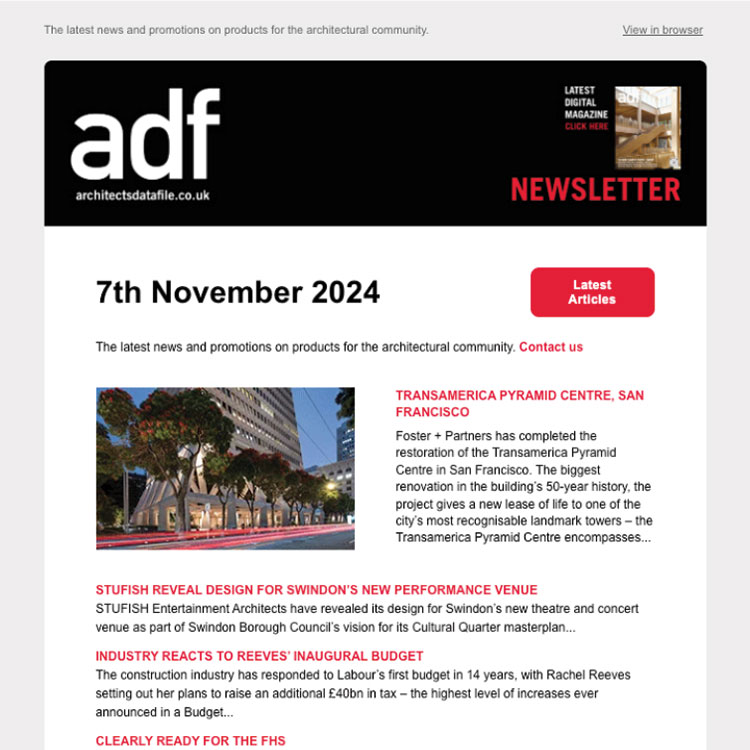Andy Noble of CD (UK) looks at why architects should consider staying ahead of the curve by specifying solid surface facades for a highly contemporary look
How do you create a contemporary and yet timelessly effective facade? From a wave-like ribbon wrapping a new science park in Wales to the undulating frontage of a mixed-use building in Poland and a curvaceously clad villa in the Netherlands, facades that have been formed with an advanced solid surface can enable bold and distinctive architecture to perform as designed. Add both ease of installation and maintenance into the mix and a reliable solid facade solution (such as Corian) makes sense for the skin of modern buildings – as an innovative yet eminently practical choice. From distinctive aesthetics to thermal efficiency, and from creative freedom to lasting performance, there are many reasons to consider a high quality solid surface as a facade finish. In terms of design versatility there are a range of advanced fabrication techniques at the architect’s disposal. These range from CNC pattern cutting to integrated backlighting and 3D texturing. The ability of the material to be thermoformed into a wide range of different forms makes it a particularly attractive option for architects.
Curve appeal
Curves add an organic allure to the urban landscape and solid surface allows this look to be beautifully expressed via a ventilated facade. Each solid surface brand will have a different composition and ratio of key ingredients, and source for those ingredients, as well as a different manufacturing ethos – but working with a reliable, high quality material, gives the benefits of extraordinary flexibility combined with mechanical strength, and crucially, technical support, including answering key questions on certification and regulatory compliance. Combine the ability for seamless joining (or subtle shadow gaps) and an expansive, strong yet comparatively lightweight sheet can be transformed into either a monolithic effect or a complex interplay of shapes. Extensive networks of approved, highly trained and skilled technicians understand how to get the most from the right material, fully appreciating tolerances and capabilities, without compromising on safety or reliability. Indeed, it is the creativity of large numbers of fabricators who have worked to solve a design challenge presented to them by architects, which has pushed the boundaries of what a superior solid surface can achieve.
Climatic considerations
As a weather shield against wind, water, sun and ice, a solid surface rainscreen protects the structure from the elements while helping to manage interior temperature and comfort. A well-planned facade can withstand all kinds of climate conditions, while resisting damage from graffiti or the chemicals in pollution. A genuinely high-performing material will offer all this resilience, while also being easy to clean (for example, with water driven systems at 200 bars, recommended annually) and even be discreetly renewable, if necessary.
Safety first
For facade materials, whether solid surface or otherwise, fire resistance is clearly an essential consideration. Various manufacturers will have applied for and been granted certification for many different tests, for everything from seismic suitability, to weatherability, longitudinal expansion, thermal conductivity, flexural strength and freeze/thaw cycles. When considering a specification, it is important to fully explore all of the comparative documentation available.
Smooth fit, sleek finish
Available in panellised systems that can be fabricated off-site, the right solid surface can help the construction process to run smoothly. Extra large panels can also facilitate both the design and the fitting process. Current mounting systems allow panel sizes of up to five metres in height, enabled by a substructure which can accommodate the movement due to thermal expansion. The weight capability of the mounting system and the necessary expansion gaps must be taken into account. Since colours run through the entire thickness of a high quality solid surface, overlap joints will not show any dark gaps between panels, and can appear as sleek and discreet as desired.
Andy Noble is sales director at CD (UK) – the UK/Ireland distributor of Corian


